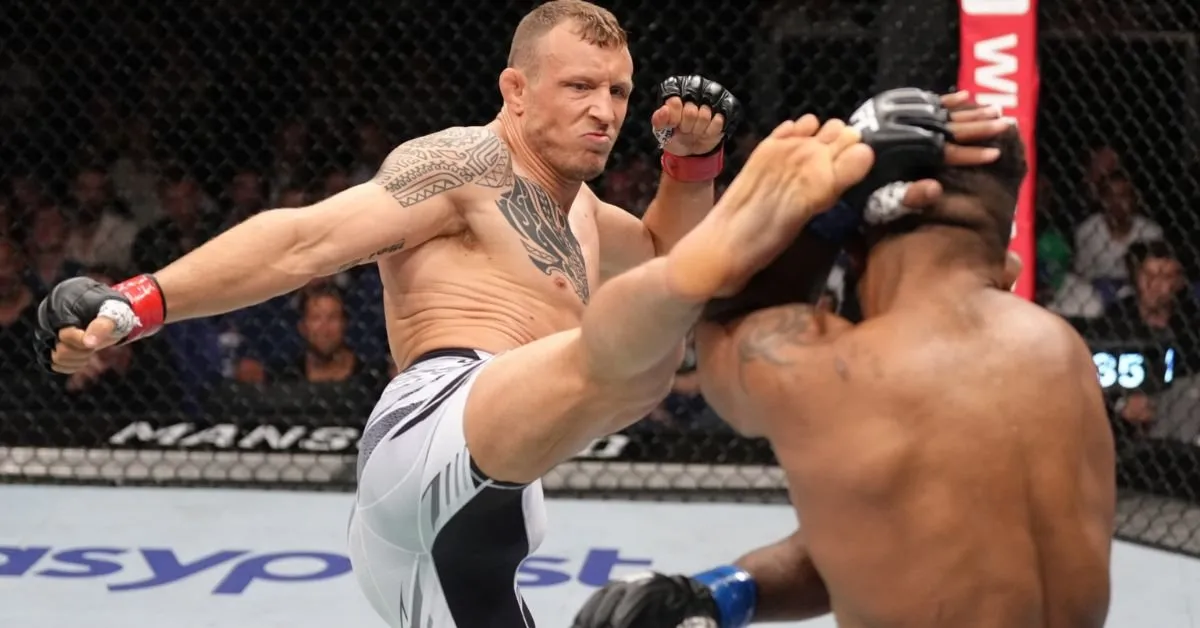
Complete MMA Training – A Definite Guide
Today I’ll show you what a well-constructed MMA training program needs to have and what you have to take into worth when designing one. Here is what we’ll explore today:
1. Are you an MMA fighter or an enthusiast?
2. Training separate martial arts for MMA
3. Learning MMA-specific techniques
4. Strength and workout for MMA
5. Recovery for MMA
6. Mental training for MMA
7. Training intensity
Conclusion
MMA training encompasses all of the physical, mental, and technical aspects necessary to compete in the sport. While there are many variegated styles and schools of thought when it comes to training, a well-constructed MMA training program should write all of the key elements necessary for success in the cage.
1. Are you an MMA fighter or an enthusiast?

The intensity and volume of your MMA training will differ depending on whether you’re a pro-MMA fighter or an enthusiast looking to get in shape and learn some fighting techniques. If you’re a fighter, your training will be much increasingly intense and your skill set needs to be much broader for success in competition.
You will train 2-3 times a day at least 5 days a week. You will spar a lot and sometimes that sparring will be quite intense, although I don’t recommend nonflexible strikes to the head, plane if you’re a pro fighter. Save that for competition.
On the other hand, if you’re an enthusiast who just wants to get in shape and learn how to fight, your training will be less intense but should still imbricate all of the key elements necessary for MMA. And If you think you’re too old for MMA, click here.
2. Training separate martial arts for MMA

You may have noticed that many MMA fighters come from backgrounds in various martial arts. Whatever your wiring art is, you will need to train in several variegated stand-alone gainsay sports to have success in MMA.
This is considering learning multiple martial arts can requite you a significant wholesomeness in MMA competition. Each martial art has its own strengths and weaknesses, and by training in multiple disciplines, you can learn to exploit the strengths of each while offsetting the weaknesses.
For example, a striker who has trained in boxing may have difficulty defending a takedown from a wrestler, but if he moreover trains in Brazilian Jiu-Jitsu he will be worldly-wise to not only defend himself on the ground if taken lanugo but moreover finish the fight with a submission. I’ve seen it many times.
3. Learning MMA-specific techniques

In wing to training in separate martial arts, it is moreover important to learn techniques and methodologies that are specific to MMA. This includes things like how to set up takedowns with punches, how to defend the takedown, how to use the fence for standing up, how to use punches on the ground AKA ground & pound, and many other elements.
It is not unbearable to be good at individual arts. It is certainly necessary but the weightier MMA fighters are the ones that have mastered the transitions which can only be washed-up by doing MMA-specific training.
4. Strength and workout for MMA

Mixed martial arts is an intense and grueling sport. To be successful, it is important to have a good strength and workout program. This will help you to be in peak physical condition for your fights.
There are many variegated ways to train for MMA but some vital things that all fighters should do are lifting weights, running, and doing plyometrics. These exercises will help to build the explosive power, strength, and endurance that you need to be successful in the cage.
Remember, this is only a supplement to your fighting training and should not be overdone. You can be in unconfined shape by mostly doing fighting training. Check out the video where I discuss this topic. And moreover the interview with a strength & workout mentor Mladen Jovanović.
5. Recovery without MMA training

Recovery is just as important as the training itself. Here are a few tips:
a) Get plenty of sleep. This will help your soul recover from the physical stress of training and prepare you for the next day. If possible, get a nap in the afternoon. But not longer than 1.5 hours as that will disturb your night’s sleep.
b) Eat healthy foods. A nutritious nutrition will help your soul repair itself and rebuild muscle tissue. Avoid junk supplies and expressly swig which will lower your testosterone.
c) Drink plenty of water. Stay hydrated. Drink approximately 5 liters of water per day. I used to drink two liters during a grueling 1.5-hour session.
d) Stretch and foam roll. Stretching and using a foam roller will help release built-up tension in your muscles and modernize your range of motion. This will help prevent injuries and speed up recovery time.
e) Use supplements wisely. Supplements can be helpful, but they are not a substitute for a good nutrition and training program. Use them wisely and don’t overdo them. Learn well-nigh which ones unquestionably work.
f) Don’t spend the unshortened day in bed on your rest day. That will mess up your muscles and you won’t be worldly-wise to get into the groove for a few days. Instead, go for long walks and maybe do a light stretch.
I have a separate article/video on recovery which you can find here.
6. Mental Training for MMA
Mental training is just as important as physical training when it comes to MMA. Without all, if you don’t believe in yourself, who will?
You need to be mentally strong to withstand the physical punishment that comes with training and fighting. I’ve seen people quit considering they can’t handle the pain of everyday training. Like John Danaher says: the toughest fighters mentally are the ones that show up day without day, year without year, and alimony training.
There will be days when you will not finger like going to practice. You will not finger like going out for a run or sparring “that guy” that unchangingly dominates you. We all have one. But you will still have to in order to improve.
Training every day is not the only thing that will test your mental resolve. You moreover need to have a strong mindset going into a competition. If you don’t believe you can win, then you’ve once lost.
There are various things that you can do to modernize your mental game that are vastitude the telescopic of this video. Here are a few videos on mental game for MMA so you explore this subject more.
7. Training intensity
 It can make or unravel your progress. If you go too easy on yourself, you won’t make any gains. But if you train too hard, you’ll risk injury or burnout. So how do you find a happy medium and stick to it?
It can make or unravel your progress. If you go too easy on yourself, you won’t make any gains. But if you train too hard, you’ll risk injury or burnout. So how do you find a happy medium and stick to it?
I used to have no increasingly than 2 very intense training sessions per week. I learned that like I learned most things – the nonflexible way.
During my Judo days, I destroyed my soul with two intense trainings per day. It made me mentally tough but my soul paid a heavy price. When I switched to MMA, I knew how to train properly and avoided training intensely all the time.
Sometimes I plane trained 3 times a day, but with medium to upper intensity. I went very intense only 1-2 times per week. Usually on Saturdays when we had MMA sparring. When I say very intense I don’t midpoint trying to rip my training partner’s throne off. No, we were shielding not to injure each other. I meant how tired we used to get.
Conclusion
This was an overview of what a well-constructed MMA training program must contain. For a well-constructed guide, trammels out my MMA Mastery Course where I go into minute detail and teach you how to train MMA properly. Trammels it out by clicking the link in the unravelment or in the cards.
If you’re an enthusiast, you will not have to do all of the things that a fighter does, but you can still follow these recommendations in order to make the weightier of your training experience. A fighter’s training program will of undertow be increasingly intense, but pursuit these tips can significantly increase your endangerment of success and reduce the probability of injury.
The post Complete MMA Training – A Definite Guide appeared first on MMA Coach.











